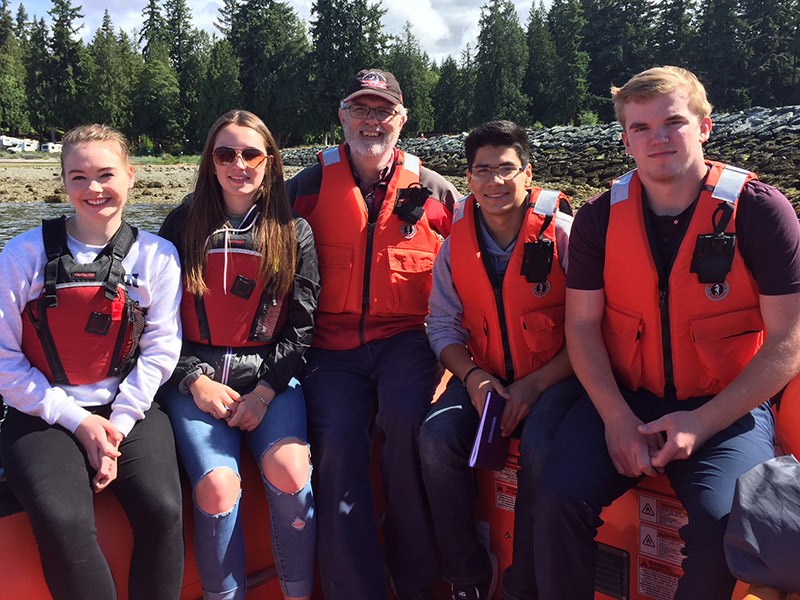When a grade 11 environmental science class at Brooks Secondary School participated in a recent beach cleanup project on Harwood Island, it presented many learning opportunities.
Among the debris, students discovered a device that was later identified as a surface circulation tracker. The devices are sometimes referred to as “sponge bobs,” due to the way they float along the surface of the water.
The tracker generated a lot of interest with the students, according to their teacher Graham Cocksedge, who searched for answers with the class.
“It was a wonderful moment of science in action,” said Cocksedge. “The kids are involved in doing something that’s hands-on about ocean currents and the environment.”
Their investigations led them to Fisheries and Oceans Canada (DFO) officials, who provided details on the provenance of the tracker and its use. The particular device the students had found was deployed by the DFO in Tsawwassen. Over the next two months it floated up to Harwood Island where it came ashore.
The device is used to help scientists understand patterns in the ocean’s surface.
On Thursday, students at Brooks met with some of the scientists involved to learn more about their work and to launch a tracking device from a Canadian Coast Guard vessel. DFO scientists Charles Hannah and Shannon Obradovich were on hand to guide students and answers questions. A key part of the learning is seeing all the different types of roles a career in science can include, said Hannah.
“Some people work in nice clean labs and wear white coats,” he said, “and some people go out and get dirty and wet.”
Scientific discovery, he added, can be a lot of fun.
Obradovich agreed that seeing scientists at work can open students’ eyes to previously unknown career paths.
“Part of the opportunity is being a role model and mentor,” she said. “That was really important for how I ended up with the DFO.”



